Wildflowers, Grasses and Other Nonwoody Plants
Media

Species Types
Scientific Name
Mirabilis nyctaginea
Description
Wild four-o’clock grows in fields, prairies, waste places, roadways, and railroads, often in poor soils. It’s called “four-o’clock,” because the magenta flowers don’t open until late afternoon.
Media
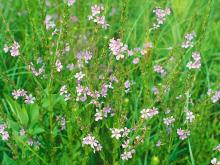
Species Types
Scientific Name
Lythrum alatum
Description
Winged loosestrife is a native Missouri wildflower that should not be confused with the nonnative invasive purple loosestrife. Learn to distinguish between the two so you can report infestations of the latter!
Media

Species Types
Scientific Name
Euphorbia commutata
Description
Conspicuous in early spring, wood spurge is a dainty species with loose clusters of small, light green flowers. Look for it in woods, valleys, streamsides, and waste areas in Ozark landscapes.
Media

Species Types
Scientific Name
Matelea decipiens
Description
The brown, starlike, spreading flowers of climbing milkweed differ from those of other milkweeds, but milky sap, warty pods with silk-tasseled seeds, and the structures in the center of the flowers show its true alliance.
Media
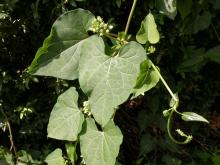
Species Types
Scientific Name
Cynanchum laeve
Description
Bees, butterflies, and other insects love its nectar, but sand vine is also a problem weed that can be difficult to eradicate. Some people cultivate it as an ornamental. Beekeepers value it as an excellent honey plant.
Media
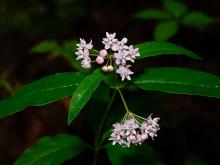
Species Types
Scientific Name
Asclepias quadrifolia
Description
One of our earliest blooming milkweeds, fourleaf milkweed bears round clusters of pink or cream-colored flowers. As the common names suggest, at least some of the leaves are arranged in whorls of 4.
Media
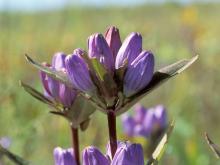
Species Types
Scientific Name
Gentiana andrewsii
Description
Closed gentian, or bottle gentian, never opens — it stays closed and budlike throughout the pollination process. How is it pollinated? Bumblebees push their way into the flowers!
Media
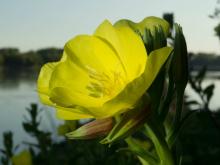
Species Types
Scientific Name
Oenothera macrocarpa (formerly O. missouriensis)
Description
The yellow flowers of Missouri evening primrose crown limestone bluffs in the Ozarks and sprawl along the tops of rocky road cuts, sweetening highway trips in the southern part of the state. It is an excellent and hardy native garden plant, too!
Media
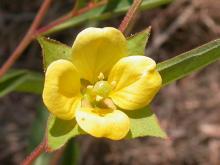
Species Types
Scientific Name
Ludwigia alternifolia
Description
One of eleven water primrose species in Missouri, false loosestrife is distinguished by its cubical fruits that open at a pore in the tip. Look for it in wet places like the edges of ponds, ditches, and along rivers and streams.
Media
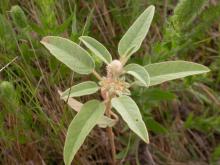
Species Types
Scientific Name
Croton capitatus
Description
Hogwort is fuzzy, densely covered with whitish hairs. A common but often overlooked plant in pastures, prairies, ditches, and roadsides, it’s usually less than 18 inches tall.
See Also
About Wildflowers, Grasses and Other Nonwoody Plants in Missouri
A very simple way of thinking about the green world is to divide the vascular plants into two groups: woody and nonwoody (or herbaceous). But this is an artificial division; many plant families include some species that are woody and some that are not. The diversity of nonwoody vascular plants is staggering! Think of all the ferns, grasses, sedges, lilies, peas, sunflowers, nightshades, milkweeds, mustards, mints, and mallows — weeds and wildflowers — and many more!





















